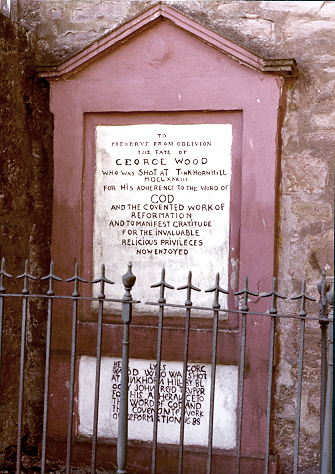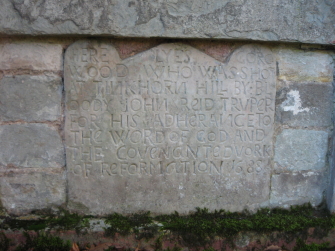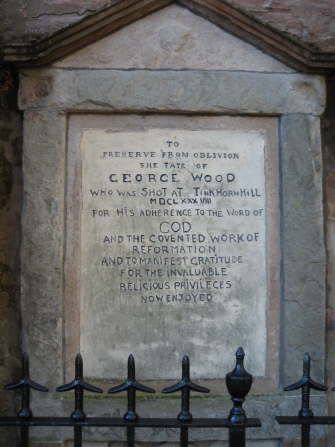George Wood
The beautifully-situated village of Sorn was an obscure hamlet in the days of the persecution, but the centre of a troubled district.
A curate was settled in the church, in opposition to the people, who were exceedingly hostile to him, and were not slow in showing their resentment.
A party of soldiers had a garrison in the place, and a noted persecutor resided in the neighbourhood, whose name lives in the traditions of the district as "bloody Reid of Daldilling." The site of his castle is still pointed out to the curious, as also the spot where his victims were hanged.
The last sufferer previous to the Revolution has his memorial in the churchyard--George Wood, a youth about sixteen years of age, shot by one of Craigie's troopers, without question or accusation. The murderer, on being challenged for what he had done, replied he knew him " to be one of the Whigs, and they ought to be shot wherever they were found.''
George Wood was killed around June 1688, and it is reckoned that he was to be the last person to be shot in the fields for his Covenanting adherence.
George Wood's Grave
Sorn Churchyard
Sorn
Ayrshire
NGR - NS 551268
The gravestone to George Wood is located at the rear of Sorn church. The original stone and its replacesment have been built into the church wall.
The original martyr-stone was inserted in the lower part of the renewed monument, and bears this inscription:
On a panel surmounted by a pediment is the following inscription on the new stone:

George Wood's grave shown above when it was all painted. This has been returned to the natural stone, as seen in the other images. The section noting that the stone was erected by subscription appears to have been obliterated at some point.









